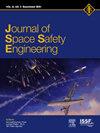美国宇航局人类研究计划:发展合作以实现人类太空飞行的未来
IF 1.7
Q3 ENGINEERING, AEROSPACE
引用次数: 0
摘要
自2007年成立以来,美国宇航局人类研究计划(HRP)的任务一直是保护宇航员在低地球轨道以外探索时的健康和表现。HRP通过一个重点研究方案帮助实现探索航天飞行,从而制定和提供解决方案,在这些任务期间和之后保护人类健康和性能。这项研究主要是在太空飞行环境和国际空间站(ISS)的地面模拟环境中进行的。在过去的3年里,美国宇航局经历了一系列变革,包括阿尔忒弥斯1号的飞行、商业近地轨道目的地计划的形成、飞往国际空间站的商业飞行,以及与参与人类航天飞行的新国际伙伴的合作。HRP抓住了这些新机会,并在所有这些方面开展合作,以收集生物医学研究数据。阿尔忒弥斯1号标志着美国宇航局新的载人航天探索任务的到来。美国宇航局成立了月球到火星计划办公室,为月球表面的探索和火星之旅设计路线图。HRP在开展研究和提供技术方面发挥着关键作用,这些技术将导致保护人类健康和绩效的解决方案,并正在与月球到火星办公室密切合作,确保这些成果及时准备就绪,以支持其战略。HRP还在制定支持这些成果所需的伙伴关系战略。商业太空飞行,包括自由飞行和亚轨道飞行以及前往国际空间站的私人宇航员飞行,正在提供更广泛的机会和更多的主题,以表征太空飞行引起的对人类系统的变化并测试对策。为了更好地利用这些机会实现其使命,人类方案一直在努力了解商业航天公司的需求,然后在共同感兴趣的方面与它们合作。此外,HRP继续通过国际空间生命科学工作组和其他联合国际小组与其国际伙伴建立长期关系。人类方案有意与正在发展人类航天能力的新国家分享其知识并就共同感兴趣的项目进行合作。未来10年将决定人类在火星探索任务中的合作方式,人类计划致力于与商业和国际合作伙伴建立和制定合作战略,以确保人类在更长时间、更远的太空探索中安全和富有成效。本文章由计算机程序翻译,如有差异,请以英文原文为准。
NASA's Human Research Program: Evolving collaborations to enable the future of human spaceflight
Since its formation in 2007, the NASA Human Research Program's (HRP) mission has been to protect the health and performance of astronauts as they explore beyond low Earth orbit. The HRP helps enable exploration spaceflight through a focused program of research that leads to the development and delivery of solutions to protect human health and performance during and after these missions. This research is conducted primarily in ground analogs of the spaceflight environment and on the International Space Station (ISS). Over the last 3 years, NASA has undergone transformative changes with the flight of Artemis I, the formation of the Commercial Low Earth Orbit Destinations Program, commercial flights to the ISS, and collaboration with new international partners participating in human spaceflight. The HRP has embraced these new opportunities and is collaborating on all these fronts to collect biomedical research data. Artemis I marked the arrival of NASA's new human spaceflight exploration missions. NASA established the Moon to Mars Program Office to design a roadmap for the exploration of the lunar surface and the journey beyond to Mars. The HRP has a critical role in conducting research and delivering technologies that will lead to solutions that protect human health and performance, and is working closely with the Moon to Mars Office to ensure these deliverables are ready in time to support their strategy. The HRP is also developing the partnership strategies required to support these deliverables. Commercial space flights, both free flyer and suborbital missions and private astronaut missions to the ISS, are providing broader opportunities and more subjects to characterize spaceflight-induced changes to the human system and to test countermeasures. To better use these opportunities to achieve its mission, the HRP has been working to understand the commercial spaceflight companies’ needs and then partnering with them on aspects of mutual interest. In addition, the HRP continues to engage in long-standing relationships with its international partners through the International Space Life Sciences Working Group and other joint international groups. The HRP is interested in sharing its knowledge and collaborating on projects of mutual interest with new countries that are developing capabilities for human spaceflight. The next 10 years will shape how humanity partners on exploration missions to Mars, and the HRP is committed to enabling and developing collaborative strategies with commercial and international partners to keep humans safe and productive as they explore longer and further into space.
求助全文
通过发布文献求助,成功后即可免费获取论文全文。
去求助
来源期刊

Journal of Space Safety Engineering
Engineering-Safety, Risk, Reliability and Quality
CiteScore
2.50
自引率
0.00%
发文量
80
 求助内容:
求助内容: 应助结果提醒方式:
应助结果提醒方式:


